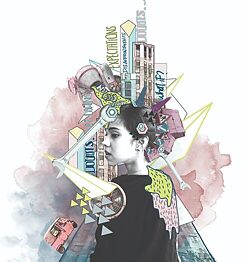Preserving Crafts
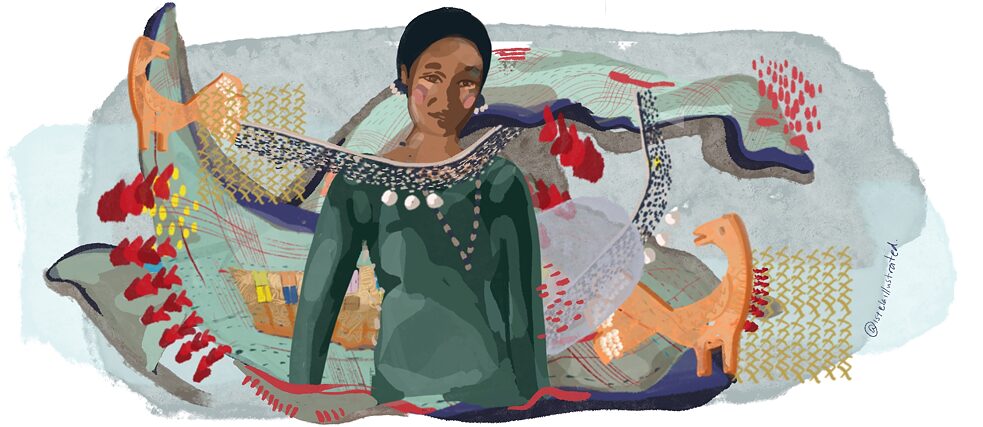
Learning from Dhaka: In a German-Bangladeshi exchange program, young designers are rethinking crafts – as an arena for cultural and social sustainability
By Anna Kessel
In current discussions about sustainability in the fashion and textile industry, cultural aspects are often overlooked. However, it is worth taking a closer look as the globalization of fashion and the advance of fast and cheaply produced garments are leading to the gradual loss of textile craftsmanship – with devastating consequences not only for cultural heritage, but also for the future prospects of appropriately trained craftsmen. In the exchange program LOCAL INTERNATIONAL IV social design + crafts ”, participating designers and students from Berlin and Dhaka discuss the question of local crafts with regard to their role in cultural and social sustainability.
Textiles – once an expensive commodity
With the effects of advancing industrial development, manual knowledge that has developed over centuries is currently dying out in both Bangladesh and Germany. This too concerns the textile sector: Due to the globalization of fashion and the steady decline in the price of textiles, quality and individuality of the products are hardly a priority for purchasing companies. The industry relies on cost-effective and fast machine production. Especially in Bangladesh, a country where the manual production of textiles has historically been – and still is – an important source of income, craft businesses and artisans facing the ever-increasing international price pressure have to decide whether to industrialize their production or to give up traditional crafts completely.It therefore seems inevitable that the online seminars between Berlin and Dhaka in summer 2020 have their particular focus on Bangladesh. This is evident in the selection of invited guests, but above all in their stories, which emphasize that the current urgency to develop economic perspectives for a nation with a weak infrastructure especially in rural areas cannot be discussed without discussing colonial heritage, too.
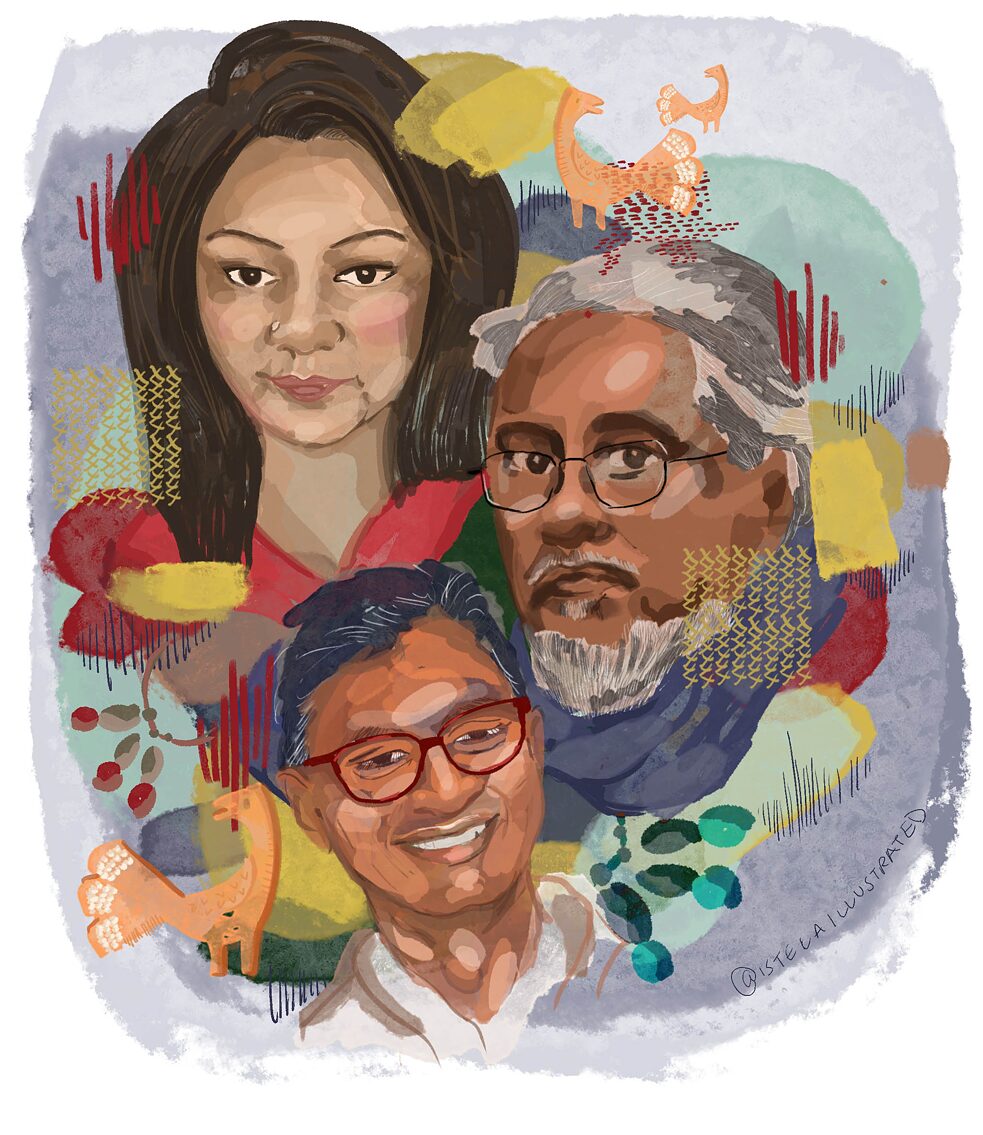 Representatives of the National Crafts Council of Bangladesh: FARZANA YUSUF, CHANDRA SHEKHAR SHAHA, SHEIKH SAIFUR RAHMAN (clockwise) © IstelaIllustrated
Representatives of the National Crafts Council of Bangladesh: FARZANA YUSUF, CHANDRA SHEKHAR SHAHA, SHEIKH SAIFUR RAHMAN (clockwise) © IstelaIllustrated
Preserving local crafts
The focus of the exchange program, which dedicates its fourth edition to social design and crafts, is first of all a practical look at the craft history of Bangladesh. Chandra Shekhar Shaha, himself a designer and invited in his role as former president and presently member of the executive committee of the National Crafts Council of Bangladesh, gives the participants a general overview of historical arts and crafts in Bangladesh and, together with Sheik Saifur Rahman, general secretary of the Crafts Council, brings them closer to the most important textile techniques such as “Jamdani” and “Nakshi Kantha”. Jamdani, one of the most valued weaving techniques in Bangladesh, has only been on the list of the Intangible Cultural Heritage of Humanity since 2013, which UNESCO has drawn up as part of the Convention for the Conservation of Intangible Cultural Heritage since 2008. This is where the topicality of the discourse becomes clear.Nawshin Khair, founder of the Bengal Crafts Society, explains how precarious the situation is with some of the traditional weaving techniques in Bangladesh. Not solely the fast fashion phenomenon of the past decade has strongly fueled the turning away from costly textile production in Bangladesh. To begin with, the era of British colonial rule over Bangladesh was accompanied by strong economic turning points which led to an ever-increasing loss of craftsmanship in between 1858 and the early 1970’s. Nawshin Khair actively addresses these problems with the Bengal Crafts Society. The non-profit organization is now a profitable addition to the fair-trade label Aranya, of which Khair is chairwoman and which dedicated itself to the successful marketing of the arts and crafts sector in Bangladesh. In 2016, a year after she took over the management of Aranya, Khair founded the partner organization to further expand the promotion of local crafts in areas with poor infrastructure, while facilitating the preservation and research of traditional craft techniques.
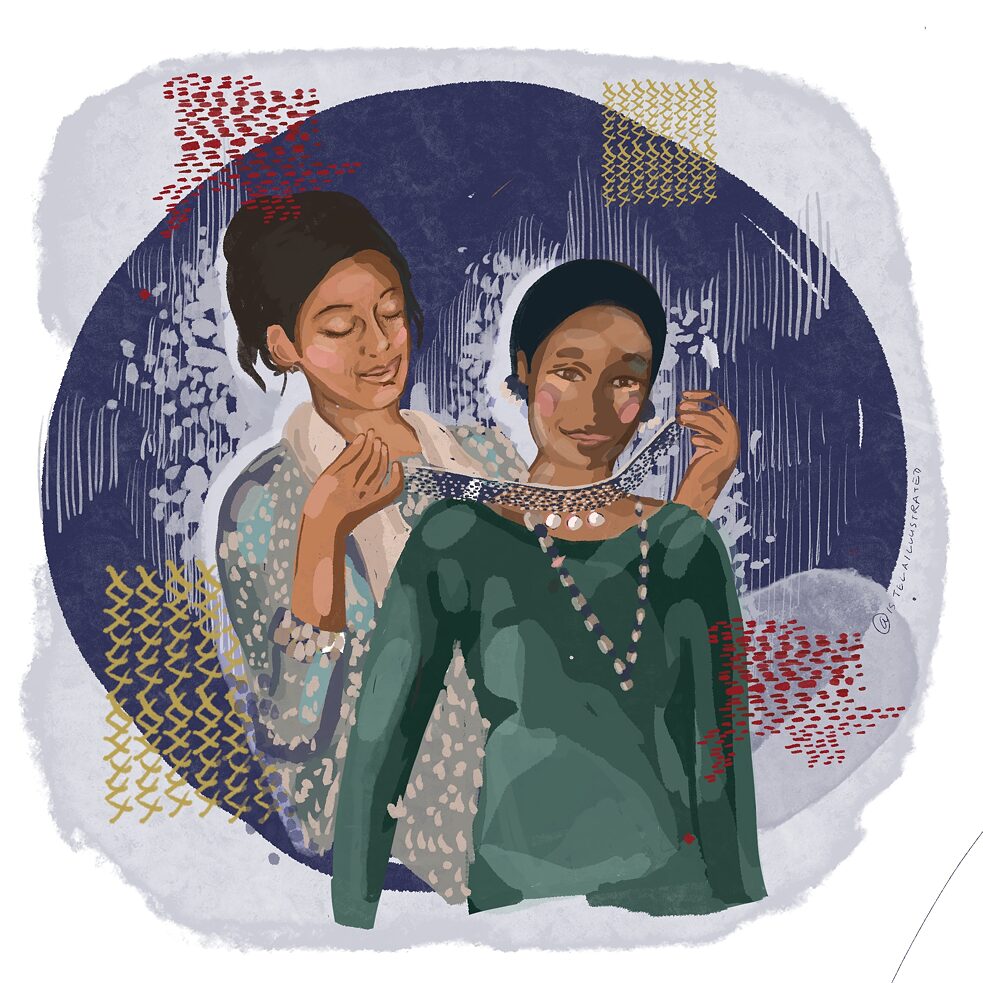 Nawshin Khair #craftforconservation #aranya_crafts #creativeconservationalliance #bdcraft_society © IstelaIllustrated
Nawshin Khair #craftforconservation #aranya_crafts #creativeconservationalliance #bdcraft_society © IstelaIllustrated
“Last year,” she tells, “we worked with the National Crafts Council of Bangladesh and companies like Aranya to revive a particularly fine variant of Jamdani, the fine count Jamdani also known as Dhaka muslin.” During the turning point of British colonial rule, the technical knowledge to weave Fine Count Jamdani with such fine yarns with a thread count of 600 to 1,000 was lost. Also, the cultivation of the type of cotton required for the production of the yarn, the so-called puthi cotton, stagnated. Today the Jamdani tradition is still very much alive, but the textiles rarely exceed a thread count of eighty. “In order to revive the lost technique of Fine Count Jamdani, we worked with local weavers. We gave them hand-spun yarn with a thread count between 200 and 400, which is much finer than what is currently used in Jamdani weaving. And we went on research trips to the V&A Museum in London, looked at the motifs from the 16th century in the collection and then tried to recreate them.”
The preservation and revitalization of crafts, this is particularly evident in Khair's stories, takes place first of all through its documentation – and this leads, among other places, to the museums of former colonial powers.
Restoration with future prospects
Which relevance bears the approach of Nawshin Khair and the National Crafts Council of Bangladesh beyond the revival of historically lost techniques? Handicrafts are not only connected to cultural traditions, but above all open up economic perspectives. That is why it is now in the interest of more and more national and international institutions to secure a livelihood for village communities through traditional knowledge of textile techniques – especially considering that previous sources of income, such as agriculture, are disappearing due to global changes.The problem that Anna Heringer, the founder behind the Bangladesh-based company Dipdii Textiles, sees: International NGOs encourage women in particular to market their craft related skills as an economic asset in the interest of their own independence. Nakshi Katha, the traditional needle stitch embroidery of Bangladesh, is, for example, not only a means of cultural expression and a story told in embroidery. It is also passed on from generation to generation from mothers to their daughters and represents a gendered skill that could help especially women to achieve economic independence. It is not uncommon for such female biographies to lead to modern textile factories, where they are exploited as cheap laborer and for which they also have to leave their rural infrastructures behind. The result: loss of social infrastructure and expenses for rented apartments and childcare. To create job prospects within the system that made economic and infrastructural conditions in rural areas so bad in the first place? Heringer, who holds an honorary professorship at the UNESCO Chair for Earthen Architecture, Building Cultures and Sustainable Development, wants to explore other ways to create future prospects. Together with the Bangladesh-based NGO for rural development Dipshikha, her co-founder Veronika Lang and her current project manager Lucía Perianes, she is creating jobs for artisans with Dipdii Textiles. As with Aranya and the Bengal Crafts Society, these jobs enable a decentralized production within the villages and communities of the craftswomen, the maintenance of social networks and thus a high quality of life beyond an adequate income.
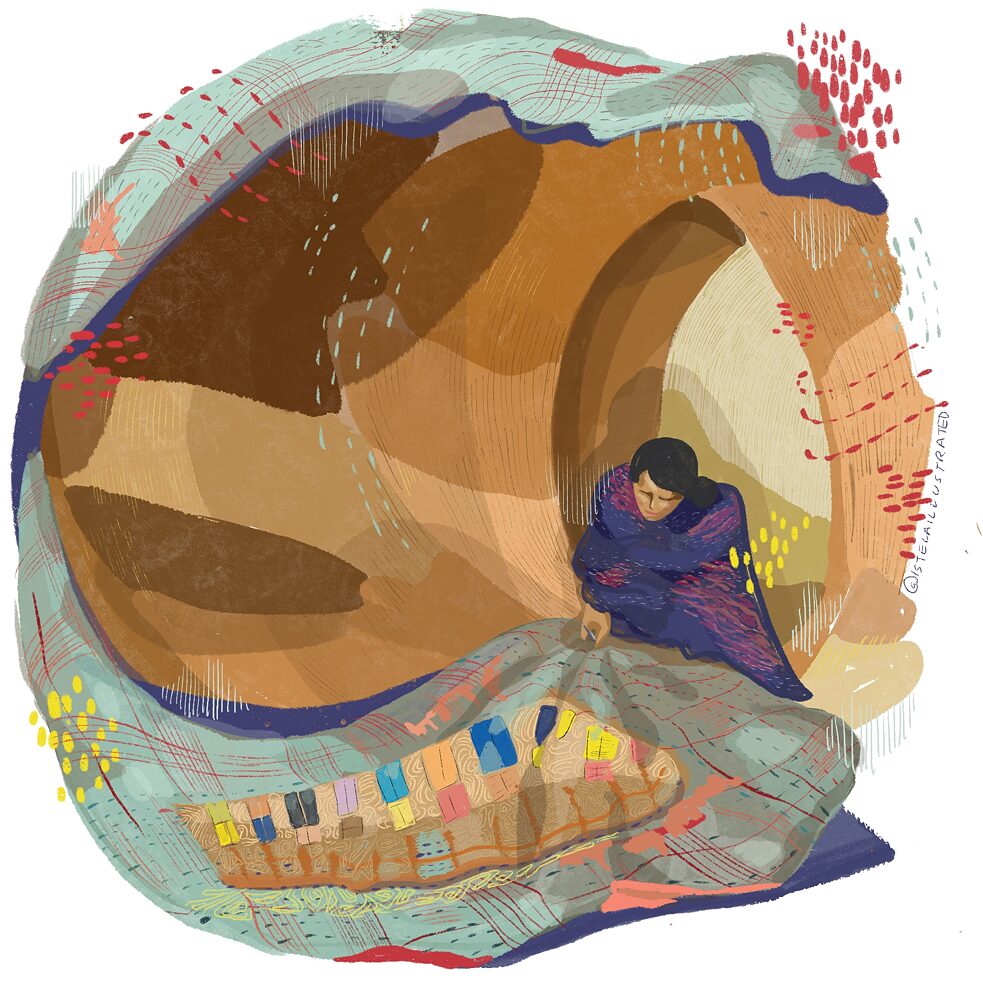 Dipdii Textiles, METI Handmade School, Rudrapur © IstelaIllustrated
Dipdii Textiles, METI Handmade School, Rudrapur © IstelaIllustrated
Craft as a motor for structural change – an outlook
Nawshin Khair, Anna Heringer, but also cooperatives such as the aforementioned Living Blue and labels such as SICA set a good example when asking: What if local crafts were not just seen as a cultural asset to be preserved, but understood as an opportunity and engine for structural change? The challenges these entrepreneurs face are, of course, particularly interesting for the aspiring designers in the LOCAL INTERNATIONAL exchange program. After all, they are actively working towards developing their own solutions and helping to shape a textile industry that has cultural and social sustainability as its top priority in addition to ecological sustainability.Farzana Yusuf, a designer associated with the National Crafts Council of Bangladesh and participant of LOCAL INTERNATIONAL IV, has experience working with local craft businesses. As a contemporary designer, she would like to immerse herself in the traditional crafts by engaging craftswomen with respect and the will to truly understand their techniques. “In order to be able to make even minimal changes to crafting processes and designs, we must first appreciate that, above all, successful methods and models have withstood the test of time – for example, which raw materials are used, how the production processes are timed, the culture, customs and traditional social hierarchies that are attached to a technology and traditionally carried it on. The level of interaction must consist of the desire for joint development with mutual respect.”
Preserving traditions and developing contemporary perspectives – in Berlin too, Lobke Beckenfeld, a student at weißensee kunsthochschule, is optimistic about this task: “Crafts,” she believes, “will play an important role in our society in the future – especially in terms of developing sustainable design principles.” As a designer, she is particularly interested in rethinking crafts in such a future-oriented way so that manual techniques can be combined with automated production. That would require interdisciplinary perspectives. A few examples from the seminar, she reveals, have already inspired her to work on her own project.
About the author
 Anna Kessel studied cultural sciences. Her research focuses on textiles in visual arts with an emphasis on the weaving class at Bauhaus and its (post) colonial connections to Latin America. She co-founded the online magazine “die konsumentin”, where she writes about responsible fashion consumption, the textile industry, environmental and human rights.
Anna Kessel studied cultural sciences. Her research focuses on textiles in visual arts with an emphasis on the weaving class at Bauhaus and its (post) colonial connections to Latin America. She co-founded the online magazine “die konsumentin”, where she writes about responsible fashion consumption, the textile industry, environmental and human rights.
